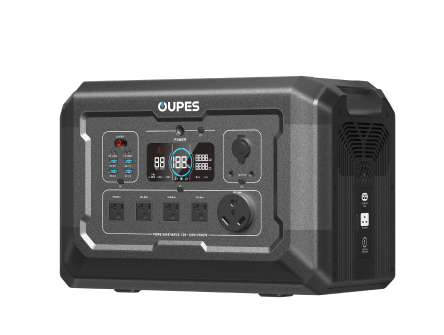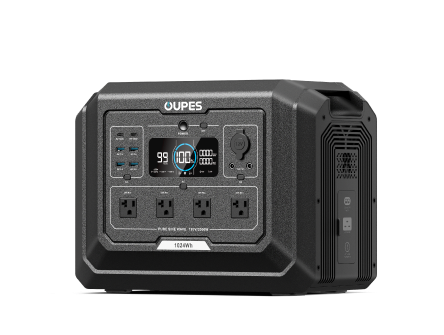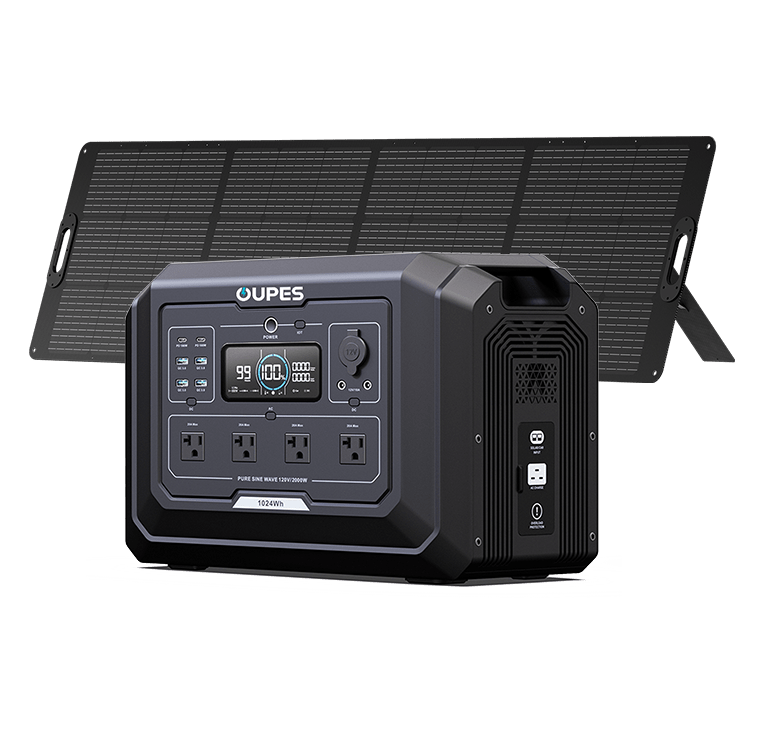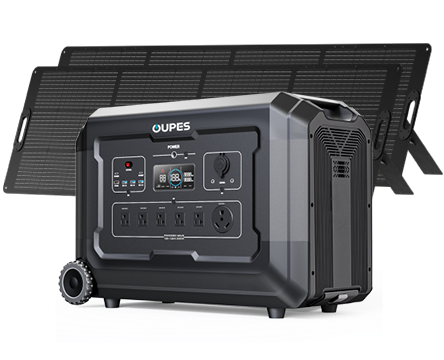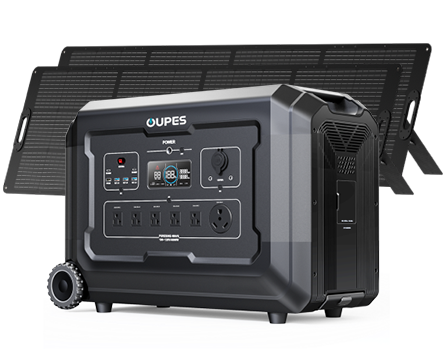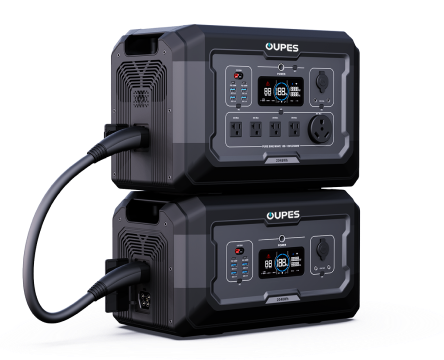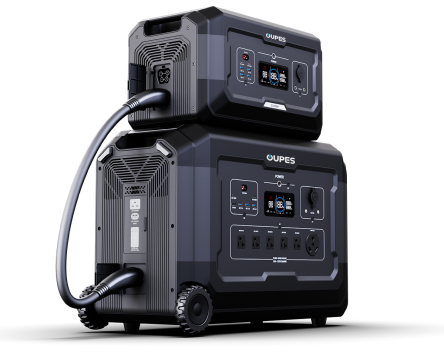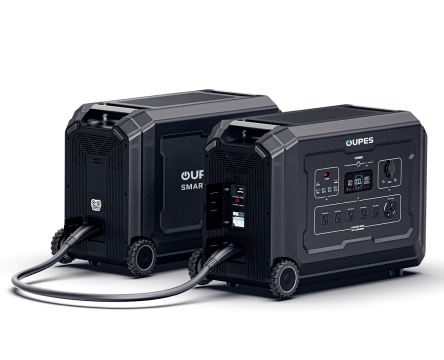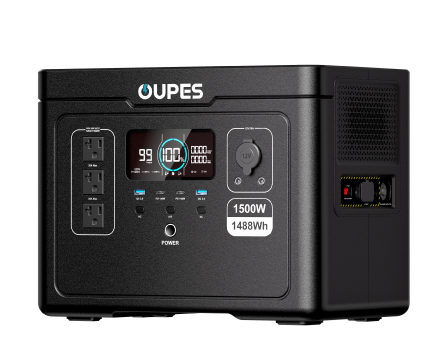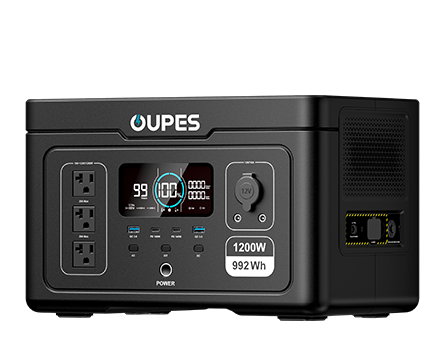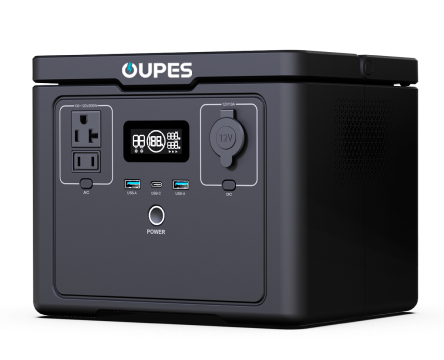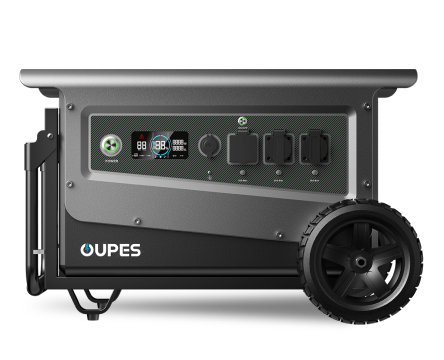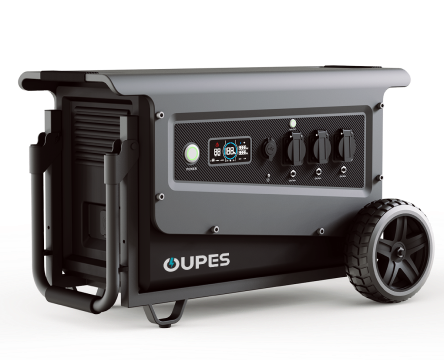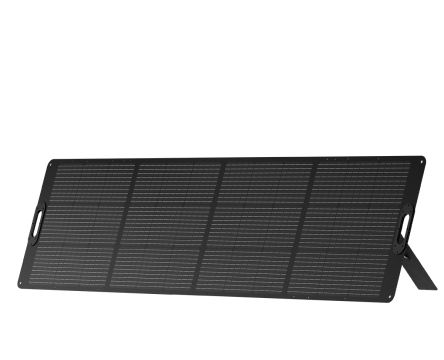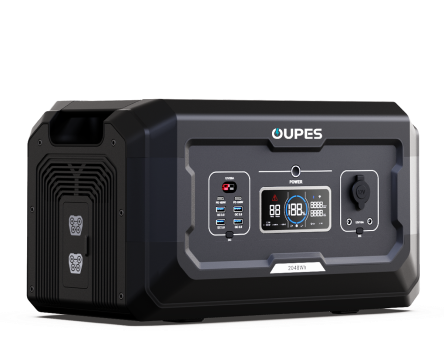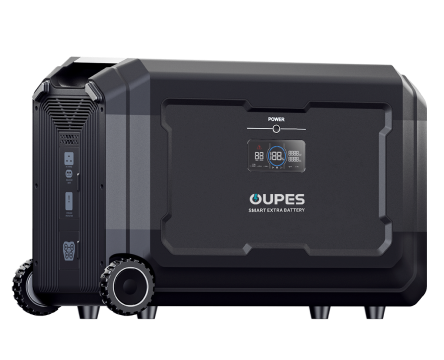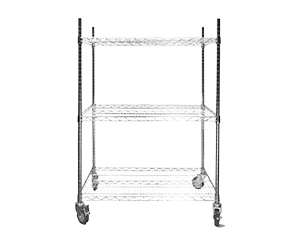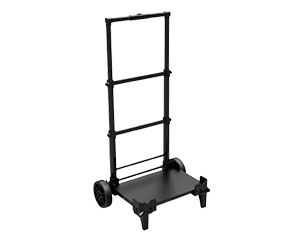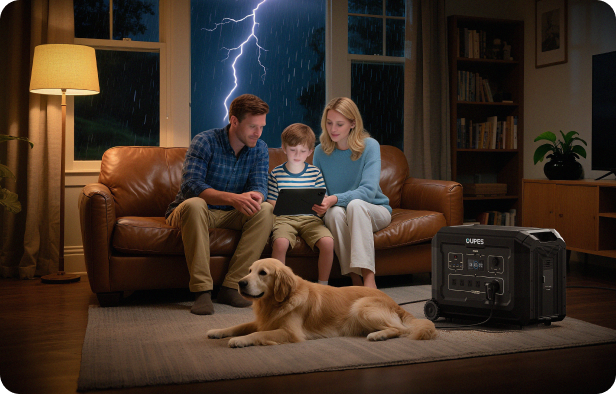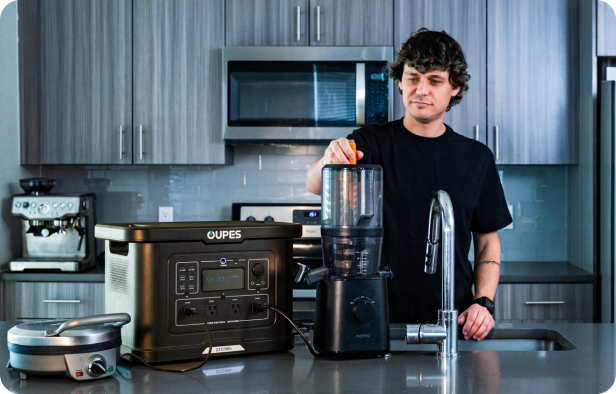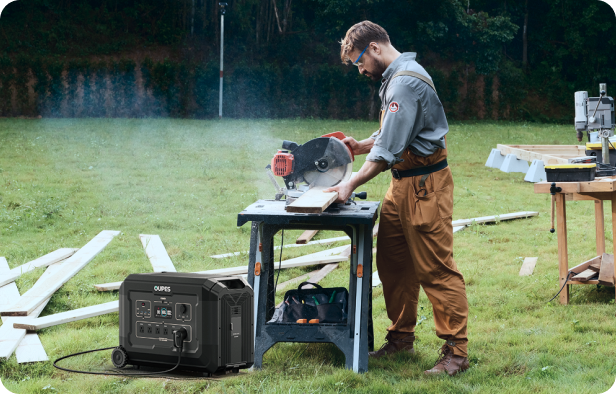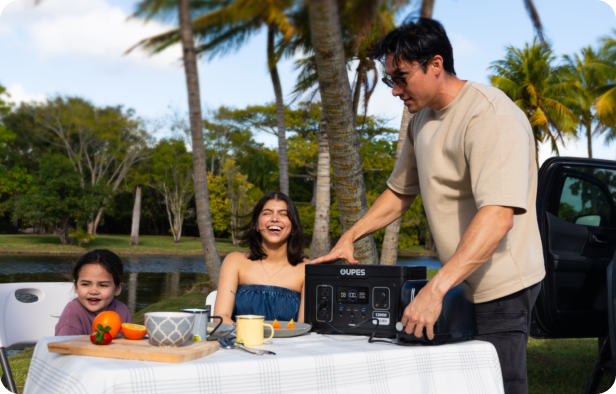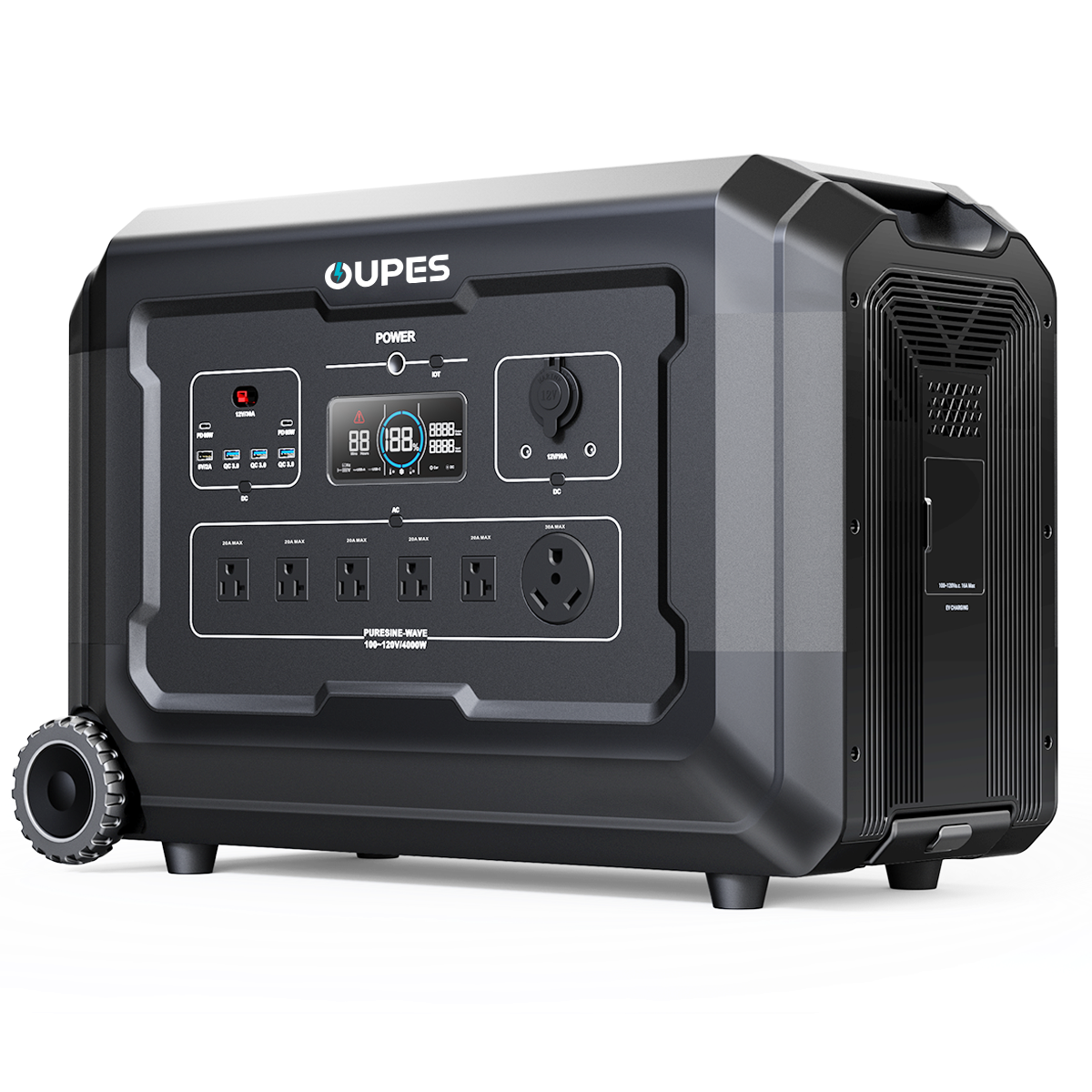
As the world becomes more conscious of the environmental impacts of traditional energy sources, the adoption of solar energy is growing rapidly. One of the most convenient and eco-friendly ways to harness the power of the sun is through portable solar panels. These compact, flexible solar systems are designed to provide off-grid power for a wide range of applications, from outdoor adventures to emergency preparedness and even home energy solutions. In this article, we will explore how portable solar panels function, their benefits, and how you can incorporate them into your daily life using OUPES power stations to complement your solar setup.
Whether you're an avid camper, a road trip enthusiast, or simply looking for a way to reduce your carbon footprint, portable solar panels can play a pivotal role in providing clean and sustainable energy. In this guide, we'll dive into the working principles behind portable solar panels, their various uses, and the advantages they offer compared to traditional energy sources.
How Portable Solar Panels Generate Power
Portable solar panels are designed to harness sunlight and convert it into usable electricity. The process of generating power starts with the photovoltaic (PV) cells within the solar panels. These cells absorb sunlight and use the energy to create an electrical current. The photovoltaic effect, which is the principle behind this conversion, occurs when sunlight strikes the semiconductive materials within the cells, typically made of silicon. This interaction causes electrons to move, creating an electric current that can be harnessed for power.
Once the sunlight is absorbed by the panels, the electricity generated is in the form of direct current (DC), which is then sent to an inverter if needed. The inverter’s role is to convert the DC electricity into alternating current (AC), which is the type of electricity commonly used in most appliances and electrical devices. However, some portable solar panel systems, such as those designed for off-grid use or smaller devices, may not require inverters if the output is only intended to charge batteries or power DC devices directly.
The size and number of PV cells in portable solar panels vary depending on the power output and the specific needs of the user. For example, if you’re using portable solar panels for small devices, a compact, lower-output panel would suffice. However, if you are looking to power larger appliances or even charge multiple devices at once, you would need a larger, more powerful solar panel array. The OUPES Mega 1 Home Backup & Portable Power Station (2000W, 1024Wh) is an excellent example of a product that integrates with solar panels to store and distribute energy effectively. By pairing your solar panel system with a portable power station like this, you ensure that energy can be stored for later use when the sun isn’t shining.
The Different Types of Portable Solar Panels
Portable solar panels come in several varieties, each designed for different applications. Understanding the types can help you choose the right one for your needs. The three most common types of portable solar panels are monocrystalline, polycrystalline, and thin-film solar panels. Each has its own advantages and considerations when it comes to efficiency, weight, and cost.
Monocrystalline solar panels are the most efficient type of solar panel. They are made from high-purity silicon, which allows them to convert a higher percentage of sunlight into electricity. These panels are usually more expensive than other types, but their efficiency makes them ideal for portable applications where space and weight are a concern. Monocrystalline panels are often compact and can deliver higher power output, making them a popular choice for people who need a reliable source of power on the go.
Polycrystalline solar panels, on the other hand, are made from silicon crystals that are melted and then cast into a mold. While they are less efficient than monocrystalline panels, they are also more affordable. Polycrystalline panels are still a good choice for portable solar systems, especially if you’re working with a larger setup where space isn’t as limited. They tend to be slightly bulkier than their monocrystalline counterparts, but they still provide reliable energy at a more accessible price point.
Thin-film solar panels are made from a variety of materials, including cadmium telluride or amorphous silicon. These panels are lightweight and flexible, making them ideal for applications where portability and flexibility are key. However, thin-film panels tend to have lower efficiency rates compared to monocrystalline or polycrystalline panels. This means that they require more surface area to produce the same amount of energy. Despite this, thin-film panels are often favored for their versatility and ease of use in specific situations, such as camping or emergency power supply setups.
The OUPES Mega 3 Home Backup & Portable Power Station (3600W, 3072Wh) can be paired with any of these types of solar panels for energy storage and backup. Whether you choose a monocrystalline, polycrystalline, or thin-film panel, combining them with a reliable power station like the OUPES Mega 3 ensures that you have a solid solution for portable, sustainable energy whenever you need it.
Advantages of Using Portable Solar Panels
There are numerous advantages to using portable solar panels, especially for those who enjoy outdoor activities, live in remote areas, or are looking for ways to reduce their environmental impact. One of the primary benefits is their sustainability. Solar energy is a renewable resource, meaning that unlike fossil fuels, it won’t run out. By using portable solar panels, you are tapping into a natural, abundant source of power that doesn’t contribute to pollution or greenhouse gas emissions.
Another major advantage of portable solar panels is the ability to generate power in off-grid locations. Whether you're camping in the wilderness, traveling in an RV, or dealing with a power outage, portable solar panels can keep your devices and appliances powered. They are incredibly useful for situations where access to the grid is limited or unavailable. With a portable solar power setup, you can charge your phone, laptop, or even run small appliances without relying on a traditional power source.
Cost savings are also an important consideration. While the initial investment in portable solar panels and a compatible power station may seem high, the long-term benefits can be significant. With solar energy, you can reduce or eliminate your reliance on utility companies, which means lower electricity bills over time. Additionally, portable solar panels have very low maintenance costs, and many can last for 20 years or more with proper care. OUPES power stations, such as the OUPES Titan 3 Power Station (3600W, 3072Wh), offer a long-lasting solution for storing and using solar energy, helping you maximize your investment.
How to Incorporate Portable Solar Panels Into Your Energy Setup
Incorporating portable solar panels into your energy setup is a straightforward process, but there are a few key factors to consider to ensure optimal performance. The first step is to assess your power needs. If you're looking to power small devices like smartphones or lights, a smaller, compact solar panel might suffice. However, if you want to run larger appliances, such as refrigerators or air conditioning units, you'll need a larger solar array to meet your energy demands.
Next, it's important to choose a compatible power station or battery storage system. OUPES offers a variety of portable power stations that can help you store the energy collected by your solar panels. For example, the OUPES Mega 2 Power Station (2500W, 2048Wh) is an excellent choice for those who need a medium-sized power station that can store enough energy for everyday use. By combining your solar panels with an OUPES power station, you can ensure that your energy needs are met, no matter where you are.
Another consideration is the placement of your solar panels. To maximize efficiency, place your solar panels in an area that receives direct sunlight for the longest period during the day. If you are using portable solar panels for outdoor activities, such as camping or hiking, look for panels that are lightweight and easy to set up. OUPES provides portable solutions that are designed for outdoor use, ensuring that you have a reliable power source even when you're off the grid.
Conclusion: The Future of Portable Solar Energy
Portable solar panels offer an exciting and sustainable way to generate and store energy. As the technology continues to evolve, these panels are becoming more efficient, affordable, and accessible to a wider range of users. Whether you're a nature lover who enjoys camping in remote areas or someone who is simply looking for a backup energy solution, portable solar panels provide a versatile and reliable source of power. When paired with high-quality products like the OUPES Mega 5 Home Backup & Portable Power Station (4000W, 5040Wh), you can ensure that your solar energy setup is both efficient and long-lasting.
In the future, as we continue to rely more on renewable energy sources, portable solar panels will play an increasingly important role in meeting our energy needs. By harnessing the power of the sun and integrating it with reliable storage solutions, you can take control of your energy usage and make a positive impact on the environment. Investing in portable solar panels is not only a smart choice for today but also a step toward a cleaner, more sustainable energy future.

